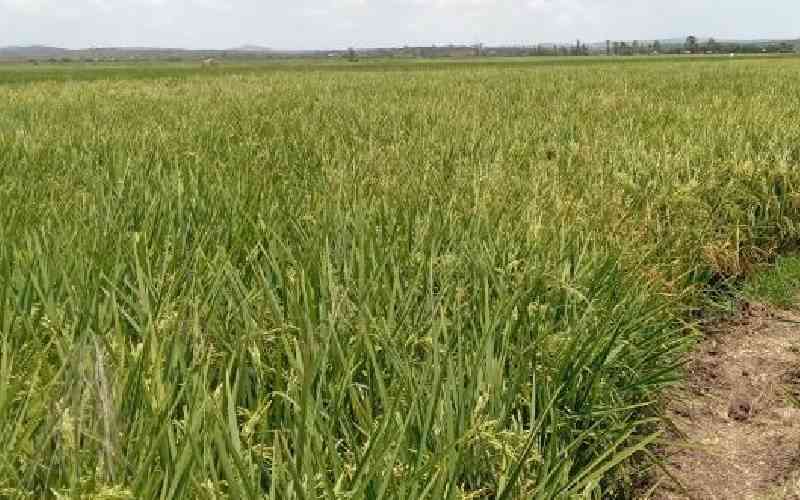Despite the growth and development of several sectors such as financial services, ICT and real estate, Kenya’s agricultural sector remains the bulwark of the economy.
Agriculture remains the dominant sector of the economy, accounting for more than a third of the country’s Gross Domestic Product (GDP) output as well as 15 per cent of wage employment.
Nevertheless, smallholder farmers have traditionally missed out on the sector’s Sh3.3 trillion value despite contributing the biggest chunk of labour and value in the sector.
This has been attributed to decades of inefficiencies in the system that are yet to be solved including historically low budget allocations, lack of adequate government support, ineffective market linkages and reliance on archaic farming practices. Dependence on rain-fed agriculture coupled with the erratic cycles of drought and floods contribute the highest to instances of crop failure and poor yields among smallholder farmers. Technology service providers have in the recent past trained their sights on the country’s agriculture sector as prime for disruption through the latest in digital technologies.
Kenya’s rapid adoption of mobile technology and relative digital savvy population has pushed both local and international companies to explore how artificial intelligence and the internet of things (IoT) can be used to alleviate some of the inefficiencies in the agricultural sector.
Tech giant IBM last week became the latest to launch its offering to farmers in the country as part of a global project that uses weather data and IoT to predict the best conditions for farming.
The Watson Decision Platform for Agriculture combines predictive technology with data from IBM’s The Weather Company and data gleaned from sensors embedded in farms to give farmers greater insights about when to undertake farm practices like ploughing, planting and spraying. The platform is available to farmers planting maize, wheat, soy, cotton, sorghum, barley, sugar cane and potato, with more crops scheduled to be added soon.
Kenya is one of the countries in Africa where IBM is deploying the platform. “These days, farmers don’t just farm food, they also cultivate data – from drones flying over fields to smart irrigation systems, and IoT sensors affixed to combines, seeders, sprayers and other equipment,” said Kristen Lauria, general manager of Watson Media and Weather Solutions, IBM.
“Most of the time, this data is left on the vine, never analysed or used to derive insights. Watson Decision Platform for Agriculture aims to change that by offering tools and solutions to help growers make more informed decisions about their crops.”
Data points
According to IBM, the average farm generates an estimated 500,000 data points per day, which will grow to four million data points by 2036. This data can be collected through specialised sensors that are now becoming cheaper and more accessible to the average farmer. Already, some farmers are deploying sensors in greenhouses to monitor conditions such as temperature to help them schedule and even automate the watering process.
The data further becomes more valuable if aggregated with other data sets from machines, comparator fields and weather patterns to create analytical reports on the best crop practices. IBM says the platform will enable enterprise businesses such as food companies, grain processors, or produce distributors work with farmers to leverage on those insights.
The platform also tracks crop yield, environmental, weather and plant biologic conditions that go into a good or bad yield including irrigation management, pest and disease risk analysis and cohort analysis. Behind the platform is the IBM PAIRS Geoscope which quickly processes massive, complex geospatial and time-based datasets collected by satellites, drones, aerial flights, millions of IoT sensors and weather models.
However, the successful adoption of these technologies to boost Kenya’s agricultural productivity relies heavily on the quality of data that is collected and analysed.
[email protected]
Stay informed. Subscribe to our newsletter
 The Standard Group Plc is a
multi-media organization with investments in media platforms spanning newspaper
print operations, television, radio broadcasting, digital and online services. The
Standard Group is recognized as a leading multi-media house in Kenya with a key
influence in matters of national and international interest.
The Standard Group Plc is a
multi-media organization with investments in media platforms spanning newspaper
print operations, television, radio broadcasting, digital and online services. The
Standard Group is recognized as a leading multi-media house in Kenya with a key
influence in matters of national and international interest.
 The Standard Group Plc is a
multi-media organization with investments in media platforms spanning newspaper
print operations, television, radio broadcasting, digital and online services. The
Standard Group is recognized as a leading multi-media house in Kenya with a key
influence in matters of national and international interest.
The Standard Group Plc is a
multi-media organization with investments in media platforms spanning newspaper
print operations, television, radio broadcasting, digital and online services. The
Standard Group is recognized as a leading multi-media house in Kenya with a key
influence in matters of national and international interest.








